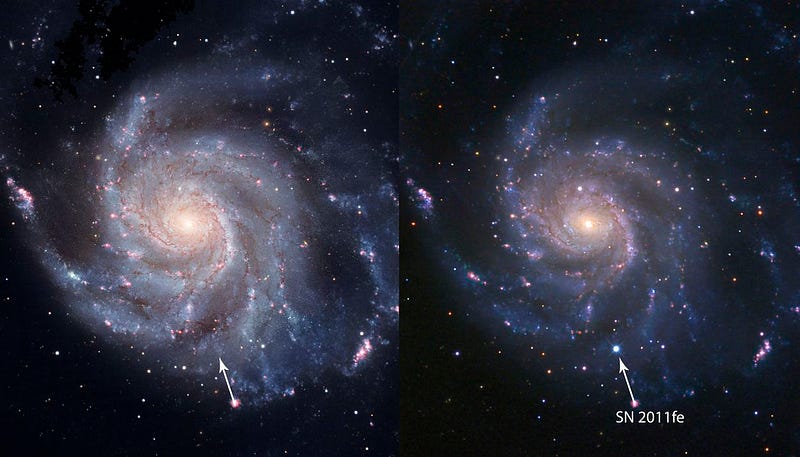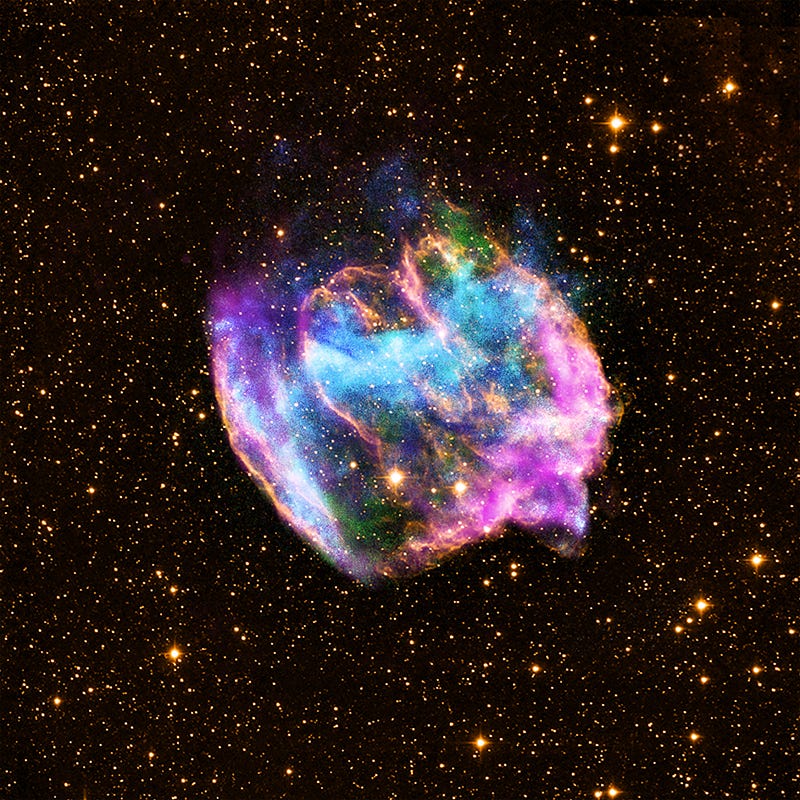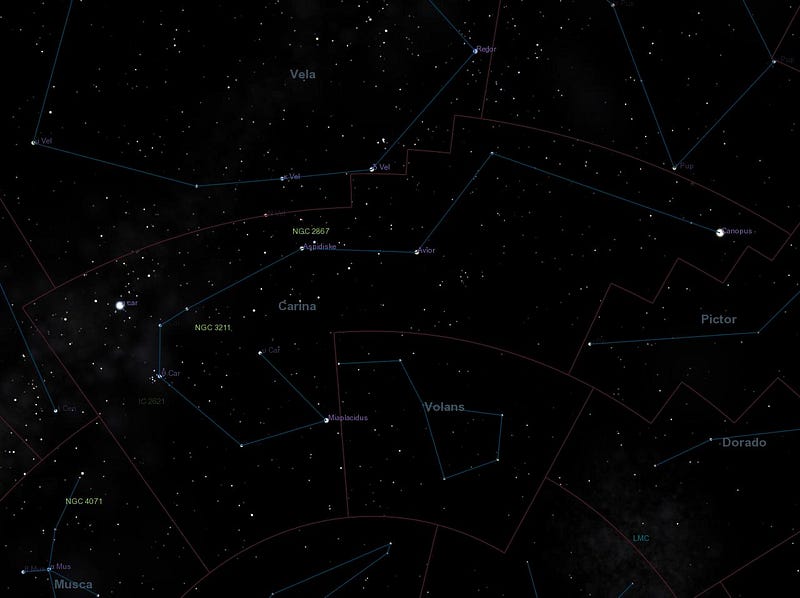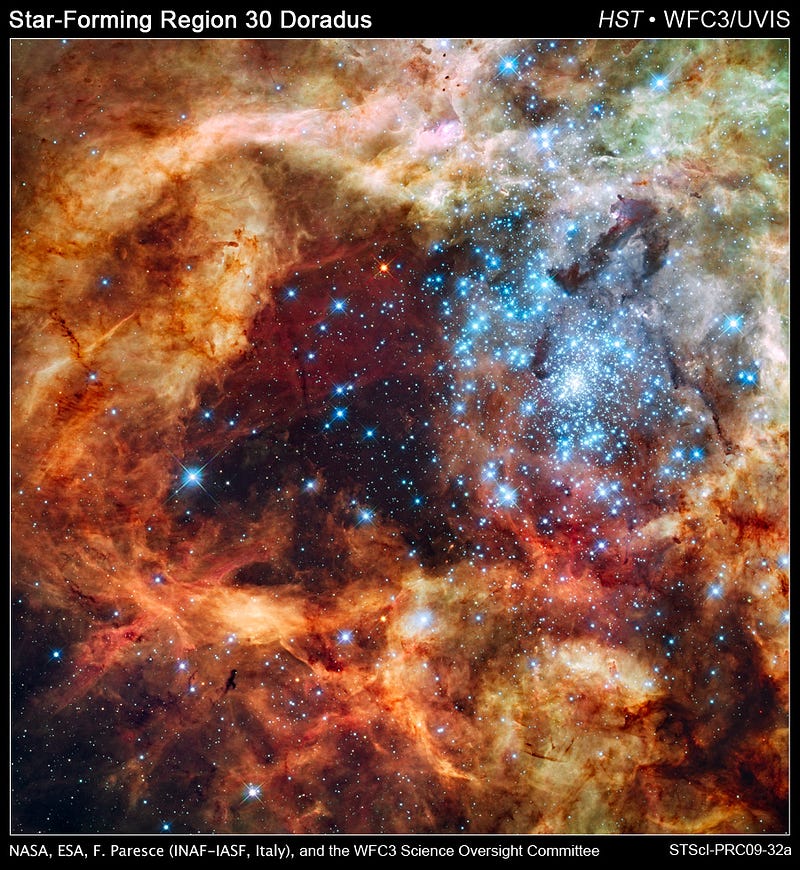Ask Ethan #40: What are Supernova Impostors?
It’s the greatest cosmic masquerade of all: a star that fakes its own death!
“If you are a dreamer come in
If you are a dreamer a wisher a liar
A hoper a pray-er a magic-bean-buyer
If youre a pretender com sit by my fire
For we have some flax golden tales to spin
Come in!
Come in!” –Shel Silverstein
As each week comes to an end here on Starts With A Bang, I comb through the questions and suggestions that you’ve taken the care to craft and send in, and select my favorite one to answer in front of the whole world. The topic of this week’s Ask Ethan comes all the way from São Paulo, Brazil, courtesy of Denise Selmo, who asks the following:
“I’d like to learn more about the topic ‘Supernova Impostors’ which seems to be the case of my favourite celestial body, Eta Carinae. It’s very hard to find good material about the topic and very few ones have already been studied. I find it so incredible that they can eject so much mass and continue alive.”
Let’s start off by taking a look at the actual objects they’re impersonating: supernovae!

Every so often — and this has been the case since antiquity — a very faint star within our galaxy (or, in principle, any galaxy), usually too faint to be seen with the naked eye, suddenly brightens so spectacularly that it can outshine all the other stars in the sky. In the past, they’ve sometimes outshone even the planets and became visible during the daytime! Originally known as a “stella nova” (Latin for “new star”), these supernovae actually turn out to be incredibly explosive events, signaling the end of a star’s life.
They can come about from a number of different mechanisms, including:
- A very massive star can run out of fuel that can be burned to release energy via the process of nuclear fusion in its core, causing it to collapse, rebound and explode.
- A white dwarf star — a formerly Sun-like star that is now a degenerate mix of carbon, oxygen and possibly silicon — can accrue enough mass atop it so that it collapses under its own weight, resulting in a runaway fusion reaction that rips the star apart.
- Two white dwarfs can merge/collide, again causing a runaway fusion reaction that this time tears both stars apart.
In all cases, a tremendous amount of energy is released in an incredibly brief period of time. In a matter of days-to-weeks, as much energy is emitted as the Sun will emit over its entire 10-to-12 billion year lifetime! And in all cases, the original, progenitor star is destroyed, leaving behind either a neutron star, a black hole, or nothing at all except a cloud of ionized plasma and gas.

But sometimes, a spectacular brightening is observed that doesn’t last for days or weeks, but for years! And when that brightening is done, the star becomes much dimmer than it was before the brightening, but it’s still there; nothing was destroyed! The star Denise mentions — η Carinae — was the first star (and the only one recorded in our galaxy) to exhibit this bizarre behavior.
Let’s go through its story.

In most constellations, astronomers name the brightest star “Alpha,” the second brightest “Beta,” and so on. So Canopus, the brightest star in the constellation of Carina (the Keel, as we’ve since broken up the huge ancient constellation of Argo Navis into different ship components) and second brightest star in the entire night sky, is also α Carinae, while the second brightest, Miaplacidus, is β Carinae, and so on down the Greek alphabet. So, for most of recorded history, η Carinae was the seventh brightest star in its constellation.
The thing is, if you go and look for it in the skies today, even with perfect naked-eye vision and a clear, dark, moonless sky, you won’t see anything.

Now, there are plenty of stars in this region of sky, and it is located in the plane of the Milky Way, which is where young star clusters tend to form. But what’s the particular story of this star? In 1837, this star underwent a great eruption, becoming much brighter than normal — but not quite as bright as a supernova — for a period of twenty-one years! At its peak brightness in 1843, it was officially called a supernova impostor (the first time something was named that), where it temporarily became the second-brightest star in the night sky, outshining even Canopus, the “Alpha” star of its constellation.
At its peak, the night sky around the constellation of Carina probably looked something like this computer-generated simulation, below.

From 1837-to-1858, it remained very bright, and then its brightness plummeted. By the end of the 1860s, it was no longer visible to the naked eye, then it brightened-and-faded again in the 1880s/1890s, and has been slowly getting a little bit brighter over the past 100 years, although it still requires a pair of binoculars to see.

So what happened? What could cause an event like this?
As it turns out, we can learn a lot by looking at η Carinae and its surrounding areas today. Because its a dusty region, the best view for learning about it comes in infrared light.

As you can see, this is a very dusty, star-forming region of space, with a young star cluster at its heart: the Carina Nebula. But the incredibly bright object at the lower left of this image is the former supernova impostor itself: η Carinae. You’d be unsurprised to learn that — like most of the stars in this image — it’s young, bright, and on the massive side. After all, large, newborn star clusters are where the most massive stars in the Universe are found. Considering that they only live a few million years, this isn’t surprising!
In fact, η Carinae is one of the most massive stars we know of, and possibly the most massive confirmed one in our own galaxy. It has a mass of between 100 and 150 times our own Sun; only the ultramassive super star cluster R136 found in the Tarantula Nebula (outside our galaxy, thank you very much) is known to have larger stars, with the most massive one there coming in at 260 solar masses!

It’s true that the most massive stars burn through their fuel the fastest, run out of fuel in their cores the most rapidly, and die in supernova explosions before any other stars. But if your star gets too massive, too asymmetrical, or develops other instabilities inside, it’s likely to have — for lack of a better technical term — a “hiccup,” where a nuclear cascade occurs inside but the star itself isn’t destroyed.
Instead, a massive ejection of material happens, but the star remains intact, and continues to burn through its fuel, albeit with an overall lower mass, as though none of this ever happened. And if we look at η Carinae today, this is what we see. (Take your time and have a good look!)

The above image, taken with (what else?) the Hubble Space Telescope, shows a dual-lobed nebula and an outer region of expelled gas/plasma that totals around twenty times the mass of our Sun! And, as you can clearly see, there’s still an incredibly bright, blue star at the core.
Will it still go supernova someday? Absolutely.
Will that day be soon? To be honest, maybe. Let me explain.

The galaxy UGC 4904 had a supernova impostor event discovered in 2004, where a star identified as a luminous blue variable star (which η carinae is too, by the way) brightened and had a mass ejection event, then slowly faded, and then two years later died in a catastrophic hypernova explosion!
So it’s possible that a supernova impostor is like a tremor before an earthquake: a sign of bigger things to come, and soon. But other luminous blue variable outbursts don’t go supernova right away, and the star P Cygni in our own galaxy — which actually brightened tremendously in the 17th century — has been very stable for centuries now.
So what are we looking at when we get a supernova impostor? An ultramassive, ultraluminous blue star (at least ~50 times the mass of our Sun) burning through its core fuel that brightens much more than any nova we’ve ever seen, but less spectacularly than any supernova, like this one in Messier 99.

Why does it eject so much of its mass like this? Some leading ideas:
- One of its onion-like layers runs out of fuel and contracts, sending unstable ripples throughout the star and leading to additional fusion, energy production and an outburst.
- The star is transitioning from a Luminous Blue Variable to a Wolf-Rayet star. (R136a1, the most massive known star, is an example of a Wolf-Rayet star.)
- A very massive companion star triggered the eruption/outburst, perhaps from a supergiant companion.
What’s most amazing is that some other ideas have recently been falsified thanks to the fact that the light-echo from the 1837 outburst, or a reflection of the ancient light off of interstellar gas clouds, has started to reach us, allowing us to better understand certain properties of at least one (the η carina) supernova impostor!

Over the next 10-15 years, we’re poised to learn even more about this ancient event. In fact, here’s what we’ve already learned:
- The eruption/nebula appears to be expanding at speeds of 210 km/s, which is much slower than typical supernova speeds,
- The star’s eruption temperature is ~5,000 K, much cooler than was previously thought and cooler than the current theoretical models allow for,
- There are no emission lines, only absorption lines, ruling out the “opaque stellar winds” model, and, in a direct quote from the article,
- “The cause that triggered such an explosion and the mass-loss without destroying the star is still unknown, but predictions from future radiative transfer simulations trying to explain η Car and its Great Eruption can now be matched to these spectral observations. Other alternative models that were proposed, e.g. the ones that use mass accretion from the companion star… as a trigger for the eruption, can be either verified or dismissed.”
And — to the best of our current knowledge — that’s what we know about supernova impostors! Thanks for a great Ask Ethan, Denise, and if you have a question or suggestion you’d like to see featured here, send it in!
Have a comment? Leave it at the Starts With A Bang forum on Scienceblogs!





